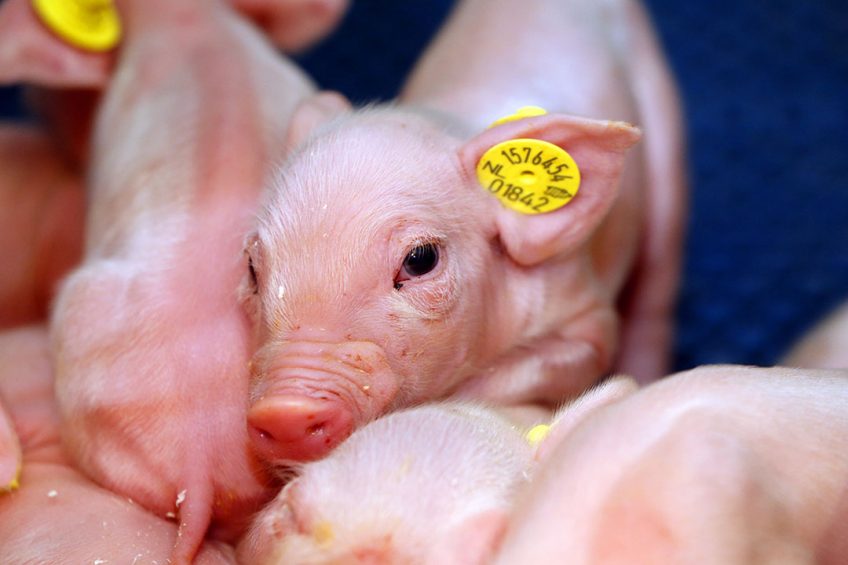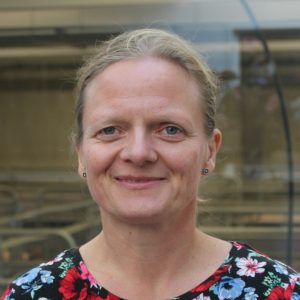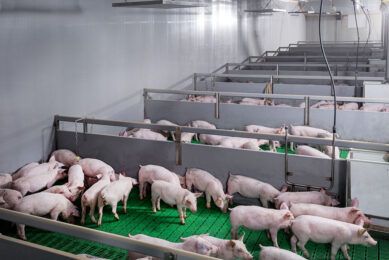And the winners are… Neonatal piglets

The shape of sow legs or that of newborn piglets’ heads, feeding of gestating sows or playing music in the farrowing room – what do these aspects all have in common? They all have a role to play in neonatal piglet survival. Housing and welfare expert Vivi Aarestrup Moustsen explains.
Various activities in the European animal health project ProHealth have proven that all these components influence neonatal piglet survival and therefore from an industry perspective, are indeed very important results. In addition, they can be implemented in commercial herds – and without costly investments. It’s a win-win-win.
Collaboration and sharing of ideas
For me, being partner in ProHealth has led to collaboration, sharing of ideas, input to research protocols, using similar registrations procedures, and not the least shortening of the time-lag from research to implementation.
ProHealth has been a good example of how we can benefit from working together. Did we know what we would gain, when we first asked if we could join? No. We expected a positive outcome – but exactly what to expect we didn’t know.
However, if you don’t invest, there will be no return on investment – it’s quite simple. Of course, there will be no loss either – or will there? Because, the world is moving, if you don’t develop your business and move on, you’ll lose contact.
So should we invest in a project or in a network? Maybe, maybe not – you don’t know the out-come until later. And if you invest, how much should you invest? A small investment has a little risk but also less outcome.
The ProHealth project: What are its aims?
I’ve just attended the last annual meeting of the EU7FP ‘ProHealth project. The scientific concept and overall aim of the project is to:
- Contribute to our understanding of the multifactorial dimension of animal pathologies linked to the intensification of production;
- To help provide effective control strategies to reduce the impact on animal welfare, in-cluding health.
The are 22 partners representing 10 EU member states and 1 associated country. There are re-search centres, industry and subject matter experts. The project itself was initiated in 2013 and now it’s all over – or is it?
Yes and no.
Officially, the project is finished, however, new contacts have been made, new knowledge has been developed, new ideas have emerged, and all of this will continue in the future. Knowledge will be implemented by the industry, contacts are invaluable both in daily research and devel-opment, and in future applications and networking – and ideas will be developed.
Pig health, productivity and management
What do we take home? For me as a scientist employed by the Danish pig industry, it was a much broader project than the ones I’m mostly involved in. ProHealth included both poultry and pigs, it included both research at university, applied research, industry initiatives, social science, economics, and knowledge transfer. It included health, productivity and management – and it included partners and participants from different countries and with very different backgrounds.

Read more about pig health in the Pig Progress Health Tool
So what do we take home? As much or as more than we invested! Because when you pull together, you’re much stronger than if you try to pull by yourself. An example, how do we improve neonatal piglet survival? We’re definitely more likely to succeed if we collaborate and take the advantages of both in-depth research, such as on the influence of stress during gestation on mortality of the piglets born later, and commercial activities.
Investigating stress levels and piglet survival rate
In commercial settings, ceteris paribus – keeping everything else unchanged – for a longer period of time is impossible. However, in experimental conditions ‘everything’ can be controlled and the effect of e.g. different stress levels on piglet survival rate can be investigated.
The French National Institute for Agricultural Research (INRA) found that, when housing ges-tating sows in a conventional system during gestation, enriching their environment with ma-nipulable material and their diet with straw pellets throughout gestation improved sow welfare and these effects were accompanied by a reduction in piglet neonatal mortality. For the industry, this is very important, as we’ll all be working on ways to improve neonatal piglet survival.
Positive handling of sows
Short term, the agenda for most livestock industries focuses on ways to improve the economy, and maybe not so much on the impact of e.g. positive handling of sows. However, being part of ProHealth, this idea was tested – and the Belgian partner, Vedanko, proved to reduce piglet mortality, while SEGES Danish Pig Research showed, that sows exposed to positive handling were calmer and less reactive towards people entering the pen.
Read more contributions by the Pig Progress Experts
The latter is important, since as herd size increases, so does number of caretakers, and therefore sows are likely to experience ‘strangers’ in their pen. In addition, with more and more sows being loose housed during lactation, it’s very important to ensure sows are calm and less reactive when caretakers come in to the pens so that it’s safe for caretakers to conduct daily surveillance of all piglets – again to ensure improved piglet survival.
Sow leg confirmation and crushing
The University of Newcastle upon Tyne (UNEW), UK, led another activity in ProHealth which investigated the influence on sow leg confirmation on crushing of piglets. It’s known that neo-natal piglet mortality is not a consequence of all sows being bad mothers, but with variation amongst sows in performance.
To point out sows or rather litters at risk, it’s important to know what characterises the sows that crush piglets. UNEW gathered information about leg confirmation, accelerometer data on their posture changing characteristics and crushing of piglets from 421 sows, and sows with ‘upright’ hind legs were more likely to crush than sows with ‘sickle’ or ‘normal’ hind legs, whilst another risk factor was large litters. Caretakers can then focus on sows with upright hind legs and sows with large litters.
In addition, UNEW registered head-shape of 21,159 piglets and Intra-Uterine Growth Restricted (IUGR) piglets had a higher probability of mortality. Again, IUGR piglets can be identified by caretakers and, by paying attention to them, the survival rate is likely to increase.

IUGR piglets – what were they again exactly? Here is some more background on IUGR piglets
So by investing in collaboration we’ve gained insights into and hopefully contributed to experiments conducted in other countries and the knowledge gained will be used in our work on improving piglet survival.
Collaboration with different skills helps
Will we do it again? Yes, collaboration with partners with different skills and resources and working together helps us solve challenges more efficiently– because of the research behind it– and faster.











